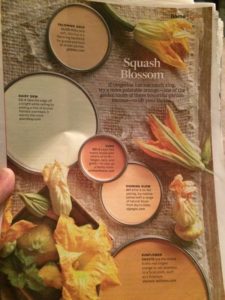What’s the difference between a cantaloupe vs muskmelon? One of the great joys of summer has to be fresh cantaloupe, either from the local farmer’s market or your own home garden. But is it cantaloupe or muskmelon? There is technically a difference, but often the names are used interchangeably.
The term cantaloupe refers to two varieties of muskmelon. What we typically call a cantaloupe is Cucumis melo reticulatus, also called the North American cantaloupe. The variety name reticulatus refers to the net-like appearance of the skin, also called reticulated. The other variety, European cantaloupe, Cucumis melo cantalupensis, has ribbed light green skin and looks nothing like what we commonly call cantaloupe.
While both of these cantaloupe varieties are muskmelons, not all muskmelons are cantaloupes. The name muskmelon comes from the sweet fragrance of the ripe fruit. The term musk comes from a Persian word for perfume, and melon is a French word derived from the Latin melopepo, which means “apple-shaped melon”. There are many different types of muskmelons, with a wide variety of shapes, sizes, flesh color and flavor.
Muskmelons, including cantaloupe are native to Persia, which is present-day Iran. The oldest pictoral record of muskmelon appears to be in an Egyptian illustration dating back to 2400 B.C. Historical records give indications that the Greeks grew muskmelon back in 300 B.C. Cultivation of muskmelon spread slowly westward, and by the late 15thcentury, Christopher Columbus carried muskmelon seeds with him on one of his voyages to the New World.
Several environmental factors potentially contribute to a melon’s flavor. While water is essential for plant growth and development, too much will dilute the sugars and dull the flavor of a nearly ripe muskmelon. This too translates to a potentially poor quality fruit.
An ‘old wives’ tale’ still floating around out there is that poor melon quality is related to cross-pollination with other members of the muskmelon family, the curcurbits. This family includes cucumbers, squash, watermelon and pumpkin. While in theory these family members can cross, it is unlikely to happen at random. So if you save and reuse the seeds or allow last year seeds to grow, you may have something else.
The best conditions to grow muskmelon in are full sun, well-drained soil. Plants or seeds should be put out after all danger of frost is past, and the soil is at least 60 degrees Fahrenheit. Well-drained or even sandy soil is a must, as standing water in a melon patch tends to breed disease.
Whether you grow your own or buy muskmelon at store or farmer’s market, how do you know what a ripe one looks like? For cantaloupes, the skin beneath the netted parts typically appears creamy beige. But for all muskmelons, cantaloupes included, the vine will naturally slip from the fruit when it is ready to harvest. If you find melons for sale that have little stubs of vine sticking out of them, they were harvested too early and probably won’t be very sweet.





